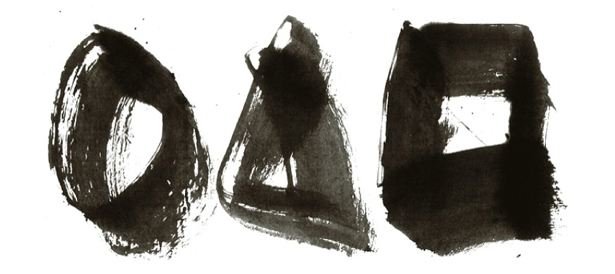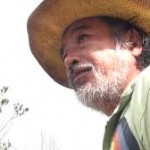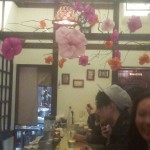WIT Life #273: Cleveland’s Japanese culture
WIT Life is a periodic series written by professional Writer/Interpreter/Translator Stacy Smith (Kumamoto-ken CIR, 2000-03). She starts her day by watching Fujisankei’s newscast in Japanese, and here she shares some of the interesting tidbits and trends along with her own observations.
I can’t believe it’s been over a month since I’ve last written here and that we are already welcoming the new school year. I spent a large portion of my summer interpreting for clients on a project in Cleveland, Ohio. I didn’t have high hopes for Japanese connections in this small city, but was determined to find them where they existed. Due to being busy with my job and returning home on weekends, I wasn’t able to explore much outside of the downtown area, but that was enough to find some Japanese influences.
First was the restaurant Noodlecat, said to be “inspired by Tokyo noodle worship and New York City noodle houses.” There is a restaurant downtown as well an outpost at the West Side Market in Ohio City, but I opted for the former to get the full experienc e. I got the Smoked Tomato Coconut Curry Udon with poached tofu, kohlrabi, potato, scallion and coconut curry kombu broth, as it sounded like a really unique combination of ingredients. Unfortunately, both the udon and its companions were disappointing. The noodles had a strange chewiness and even the texture of the tofu was off. Sure enough, when I told my clients that I was surprised the quality of the food had been so poor, they all agreed and said they had Read More
e. I got the Smoked Tomato Coconut Curry Udon with poached tofu, kohlrabi, potato, scallion and coconut curry kombu broth, as it sounded like a really unique combination of ingredients. Unfortunately, both the udon and its companions were disappointing. The noodles had a strange chewiness and even the texture of the tofu was off. Sure enough, when I told my clients that I was surprised the quality of the food had been so poor, they all agreed and said they had Read More
WIT Life #272: Japan Cuts
WIT Life is a periodic series written by professional Writer/Interpreter/Translator Stacy Smith (Kumamoto-ken CIR, 2000-03). She starts her day by watching Fujisankei’s newscast in Japanese, and here she shares some of the interesting tidbits and trends along with her own observations.
This weekend wrapped up Japan Society’s annual film festival Japan Cuts, and all of the films that I caught out of the 28 presented this year were wonderful. I particularly enjoyed the opening film on the first Friday of the festival, The Snow White Murder Case (白ゆき姫殺人事件). This movie made its U.S. premiere, and told the story of the murder of a beautiful young office worker. The prime suspect is her plain co-worker who has disappeared following the murder, and in the online world the case is made for her guilt before the official investigation takes place. As interviews are carried out with others at the company and the truth is gradually revealed, viewers come to realize how culpable we are in automatically convicting suspects based on hearsay and popular opinion. This film skillfully highlights just how pernicious social media can be in stringing people up before they have the opportunity to defend themselves. Although this sounds like a dark story, it also has comic moments that serve to lighten the mood.
Two kid-centered films that I liked more than I expected were Maruyama, the Middle Schooler (中学生円山) and Hello! Junichi (ハロー!純一), both of which use dance and humor to great effect. The former focuses on a 14-year old in the height of puberty who uses his active imagination to Read More
WIT Life #271: New York Japan Cinefest at Asia Society
WIT Life is a periodic series written by professional Writer/Interpreter/Translator Stacy Smith (Kumamoto-ken CIR, 2000-03). She starts her day by watching Fujisankei’s newscast in Japanese, and here she shares some of the interesting tidbits and trends along with her own observations.
Last week I went to the 3rd annual New York Japan CineFest held at Asia Society. It featured six short films ranging in length from 4-30 minutes, many of which had already received awards at other film festivals. I attended with fellow JET alums, so it was fun to dissect the films together and relate them to our respective Japan adventures. The event opened with The Misadventures of Incredible Dr. Wonderfoot, and directors Grier Dill and Brett Glass were on hand to offer an introduction.
In addition, two of the movie’s stars, Tsukasa Kondo and Tadashi Mitsui, also shared their experiences of making the film. The former is actually one of the creators and stars of the web series Second Avenue, which follows two 20-something Japanese roommates in Brooklyn, an aspiring actress and a Japanese gay law student (played by Kondo). The first season of six episodes (mostly in Japanese with subtitles) are really entertaining, especially for viewers who understand Kansai-ben .
.
It was fun to watch the quirky podiatrist Dr. Wonderfoot, but my personal favorite out of all the flicks (and audience award recipient) was one of the concluding films, Little Kyota Neon Hood (I also liked the final film Lil Tokyo Reporter that was based on the true story of L.A. Japanese-American community leader Sei Fujii). This film takes place in Tohoku and features 10-year old Kyota who is suffering from Read More
WIT Life #270: Godzilla!
WIT Life is a periodic series written by professional Writer/Interpreter/Translator Stacy Smith (Kumamoto-ken CIR, 2000-03). She starts her day by watching Fujisankei’s newscast in Japanese, and here she shares some of the interesting tidbits and trends along with her own observations.
This year marks the 60th anniversary of the first Godzilla movie, and last week the newest version was released. The cast features familiar names like (a wooly-haired and wild-eyed) Bryan Cranston, Juliette Binoche and Ken Watanabe. It has our favorite kaiju (monster) taking on a pair of MUTOs (Massive Unidentified Terrestrial Organisms), the new kaiju on the block. They are ancient parasites that come from the same era and ecosystem as Godzilla, and feed off of radiation like him. In addition to destroying American cities, the male and female MUTO terrorizing the U.S. are looking to mate.
 Cranston and Binoche play an engineer couple who lived in Japan with their young son in 1999, working together at the Janjira nuclear plant where something went wrong. She perished during this accident, and the movie is set in the present day when he is determined to find out what exactly happened, as he doesn’t believe that it was a natural disaster as is being claimed. Watanabe’s character is the moral compass of the movie, a scientist who knows all about Godzilla and his kind. He adds Read More
Cranston and Binoche play an engineer couple who lived in Japan with their young son in 1999, working together at the Janjira nuclear plant where something went wrong. She perished during this accident, and the movie is set in the present day when he is determined to find out what exactly happened, as he doesn’t believe that it was a natural disaster as is being claimed. Watanabe’s character is the moral compass of the movie, a scientist who knows all about Godzilla and his kind. He adds Read More
WIT Life #269: Japan Day @ Central Park
WIT Life is a periodic series written by professional Writer/Interpreter/Translator Stacy Smith (Kumamoto-ken CIR, 2000-03). She starts her day by watching Fujisankei’s newscast in Japanese, and here she shares some of the interesting tidbits and trends along with her own observations.
Japan Day @ Central Park celebrated its 8th year this past Sunday, and 50,000 attendees came out on this warm, beautiful day. As it coincided with Mother’s Day, many families enjoyed the events together. In addition to the free food and culture booths, an assortment of performances were featured on the main stage. There was some stellar taiko drumming and an interesting Matrix-like duo, but many in the crowd were waiting excitedly for the crooner Jero, who I wrote about and got to interview when he came to Japan Society two years ago.
This Pittsburgh native began his career singing enka (Japanese traditional ballads) as a youngster with his Japanese grandmother, and his official career started in Japan six years ago. Jero treated the audience to his debut single 海雪 (Umiyuki or Ocean Snow) as well as Read More
WIT Life #268: New Japanese movies worth seeing
WIT Life is a periodic series written by professional Writer/Interpreter/Translator Stacy Smith (Kumamoto-ken CIR, 2000-03). She starts her day by watching Fujisankei’s newscast in Japanese, and here she shares some of the interesting tidbits and trends along with her own observations.
The cherry blossoms have come and gone since the last time I posted, truly fleeting! I was lucky enough to enjoy them twice this year, both during a trip to Japan last month and at the Brooklyn Botanical Garden’s Sakura Matsuri earlier this month. To get through the long flight over the Pacific I like catching up on movies I missed, and I spent my outward voyage enjoying Oscar nominees and the return trip watching some new Japanese movies. During my inward flight two of the movies I picked, Judge! and The Little House, both featured one of my favorite Japanese actors, Satoshi Tsumabuki.
The former film features Tsumabuki as a young advertising agent who is forced by his boss to go in his place as an international judge for a worldwide TV Advertising Festival taking place in Santa Monica. By great coincidence, his boss’s name is Ichiro Otaki and Tsumabuki’s character’s name is Kiichiro Ota, giving them the same name if written Japanese-style with last name first. Ota points out that when abroad, names are written with first name before last name, but his boss ignores his concerns and sends him off. Another name coincidence is that Ota’s female co-worker Hikari has the same last name (in comparison to Kiichiro, she is amusingly referred to as the “talented Ota” by Otaki).
Kiichiro doesn’t have confidence in his English speaking ability, so he enlists Hikari to Read More
WIT Life #267: Japan’s underutilized female resources
WIT Life is a periodic series written by professional Writer/Interpreter/Translator Stacy Smith (Kumamoto-ken CIR, 2000-03). She starts her day by watching Fujisankei’s newscast in Japanese, and here she shares some of the interesting tidbits and trends along with her own observations.
Early this month I attended a Japan Society event regarding empowering women in the U.S. and Japan. The featured speakers were former Diet member, Minister of the Environment and Minister of Foreign Affairs Yoriko Kawaguchi, and Morgan Stanley Chief Financial Officer Ruth Porat. The conversation was moderated by Columbia Professor of History Carol Gluck, a Japanologist who has written several books on Japanese history. Some of the topics to be addressed were gender disparity issues, using quota systems to increase numbers of women executives and work-life balance, so it was guaranteed to be an interesting discussion.
Kawaguchi pointed out that a mentality change on the part of both employers and women themselves is needed. M![kate_hesson_juggles_work_and_family__1610129638[1]](http://jetwit.com/wordpress/wp-content/uploads/2014/04/kate_hesson_juggles_work_and_family__16101296381-150x150.jpg) any Japanese women strive for nothing more than having a happy, healthy family, not even conceiving that they could reach the levels of upper management. Of course, this creates a chicken and egg scenario as there are few female role models in these positions so they don’t have many predecessors in whose footsteps they can follow. Porat remaked that when she started out there were few female managers she could look up to, but credited her advancement partially to male superiors who recognized her skills and took a chance on her. Kawaguchi stressed that there is a Read More
any Japanese women strive for nothing more than having a happy, healthy family, not even conceiving that they could reach the levels of upper management. Of course, this creates a chicken and egg scenario as there are few female role models in these positions so they don’t have many predecessors in whose footsteps they can follow. Porat remaked that when she started out there were few female managers she could look up to, but credited her advancement partially to male superiors who recognized her skills and took a chance on her. Kawaguchi stressed that there is a Read More
WIT Life #266: Kajitsu Spring Tasting Reception
WIT Life is a periodic series written by professional Writer/Interpreter/Translator Stacy Smith (Kumamoto-ken CIR, 2000-03). She starts her day by watching Fujisankei’s newscast in Japanese, and here she shares some of the interesting tidbits and trends along with her own observations.
Over the weekend I had the chance to take part in the delectable Spring Tasting Reception held at Kajitsu/Kokage. For those of you who don’t know this spot, it’s about as close as you can get to Japan here in NYC. Last year I celebrated my birthday with a delicious meal at Kajitsu, the restaurant on the upper floor featuring 精進料理 (shojin ryouri), vegan cuisine devised centuries ago by Buddhist monks which was the predecessor to kaiseki .
In the first four years of its existence Kajitsu was located in the East Village, but it moved to its midtown location a year ago. Aside from Kajitsu occupying the second floor, Kokage on the first floor serves non-vegetarian Japanese food and Ippodo near the entrance sells Japanese tea. There is literally something for everyone, and both restaurants are open for both lunch and dinner.
This event was celebrating the promotion of the Executive Sous Chef Hiroki Odo to Executive Chef, as current Executive Chef Ryota Ueshima is returning to Japan. The amazing spread featured Read More
WIT Life #265: NY Peace Film Festival
WIT Life is a periodic series written by professional Writer/Interpreter/Translator Stacy Smith (Kumamoto-ken CIR, 2000-03). She starts her day by watching Fujisankei’s newscast in Japanese, and here she shares some of the interesting tidbits and trends along with her own observations.
This past weekend I had the opportunity to attend the NY Peace Film Festival co-hosted by my lovely friend Yumi Tanaka. This year highlighted 11 films over the course of the weekend, many with Q&As with their directors following the screenings. I was lucky enough to be able to interpret for two of the Japanese filmmakers who were Skyped in from Japan for their Q&As (a first for me!). Saturday night featured the documentaries The Targeted Village by Chie Mikami and X Years Later by Hideki Itoh.
The first film focuses on a small village in Okinawa called Takae, which happens to be situated between two American military bases. Residents are fighting against the construction of new helipads in Takae, being installed in preparation for the deployment of Osprey. Their story embodies U.S. military strategy dating back to the Vietnam War, the blocking of the gates to the Futenma base, and their town’s rage against their state.
Depicted here is one of the main characters profiled in the film, a local farmer and father of 4 who just wants to ensure that his children can continue to live their quiet lives. In one scene his young son asks how they will be able to study at school with all the noise from the Osprey flying overhead. The farmer takes part in protests again the helipad construction, and unbelievably the Japanese government brings a case of “traffic obstruction” against not only him and several other peaceful protesters but his 7-year old daughter who was Read More
WIT Life #264: Campaign
WIT Life is a periodic series written by professional Writer/Interpreter/Translator Stacy Smith (Kumamoto-ken CIR, 2000-03). She starts her day by watching Fujisankei’s newscast in Japanese, and here she shares some of the interesting tidbits and trends along with her own observations.
Yesterday I went to see director Kazuhiro Soda’s documentary Campaign (選挙) at Japan Society, being shown as part of Richie’s Electric Eight: The Bold and the Daring (part 2 of the film series honoring Ritchie that I talked about in a recent post). It came out in 2007 and was screened at the Berlin Film Festival that year, and was loved by Ritchie who introduced it at a preview at Tokyo’s Foreign Correspondents Club of Japan. This fascinating, self-funded film follows Soda’s Tokyo University (東大) classmate Kazuhiko Yamauchi in becoming the LDP candidate in a by-election for a seat on the Kawasaki City Council, after relocating there from Tokyo for that purpose. Campaign tells the story of how Yamauchi is groomed as a promising newcomer for this well-established conservative party. The LDP is killing it with Prime Minister Junichiro Koizumi and his reform platform on the national level, but engaged in a close battle with the DPJ on the local level.
Yamauchi’s education extends to his wife Sayuri, a particularly interesting character in the film. He is instructed to refer to her as his “housewife” (「家内」 or kanai) as opposed to “wife” (「妻」 or tsuma), a term they both take umbrage against but become resigned to using. In addition, Yamauchi’s supporters within the LDP’s well oiled local political machine later encourages her to quit her job to focus on her husband’s political career, an idea that outraged her. Yamauchi urges her to Read More
WIT Life #263: Tohoku Earthquake/Tsunami 3-year anniversary
WIT Life is a periodic series written by professional Writer/Interpreter/Translator Stacy Smith (Kumamoto-ken CIR, 2000-03). She starts her day by watching Fujisankei’s newscast in Japanese, and here she shares some of the interesting tidbits and trends along with her own observations.
Today in Japan (where it is already March 11) marks three years since the earthquake/tsunami hit the Tohoku region. In a nationally televised news conference to commemorate the anniversary, Prime Minister Abe talked about the children who have lived their whole lives only knowing their home as a disaster-stricken area, saying he wanted to invite as many of them as possible to the 2020 Olympics as a “symbol of reconstruction.” Over the last three years recovery has taken place, though not at a pace as fast as some would like. The news this morning reported that out of the “reconstruction housing” that is to be built in the affected prefectures of Iwate, Miyagi and Fukushima, only 3% has been completed. Many of the over 267,000 evacuees are living in temporary housing that has become more permanent than temporary.
In terms of what can be done to help, many speak of the necessity of implementing not only one-time events, but sustainable activities that will serve as a source of both economic and psychological sustenance. Experts on a recent Japanese political talk show agreed that the goal should not be returning the region to what it once was, some even lamenting oft-used terms such as “reconstruction assistance” and “affected area.” They claim that these ways of thinking are not a basis for moving forward, but looking back. They encourage those who want to help to focus their efforts on Read More
WIT Life #262: 梅祭り!
WIT Life is a periodic series written by professional Writer/Interpreter/Translator Stacy Smith (Kumamoto-ken CIR, 2000-03). She starts her day by watching Fujisankei’s newscast in Japanese, and here she shares some of the interesting tidbits and trends along with her own observations.
Over the weekend I had the chance to try the 梅祭り (ume matsuri or plum blossom festival) Prix Fixe at Hi Collar in the East Village. It was my first time going to this cool hole-in-the-wall location, which hasn’t even been open for a year. Hi Collar operates as a coffee shop during the day, offering beverages and desserts, and at night transforms into a sake bar/restaurant. You can see some of the amazing ume offerings in the menu here, and I especially enjoyed the rice that closed the meal (although it lacked yuba which is one of my favorite foods, as they had run out). The cozy bar sits about 10 people (and has little hooks for your bags underneath, so convenient!), and we were there on Saturday night so it was packed. However, there is a turnover as some people just come in for a drink and leave fairly quickly, as opposed to people like my friend and I who lingered over our ume course for hours. At $38 it is amazingly reasonable so if you have a chance to go before the end of the month when the matsuri ends I would highly recommend it…
I also got the accompanying $30 Umeshu Pairing, which was phenomenal. It came with five glasses of various 梅酒 (ume shu or plum wine), not all of which were sweet. I really liked the Kimoto Umeshu from Daishichi Brewery in Fukushima. This sake producer was one of a few highlighted in a recent New York Times article about how the Japan government is using sake to revitalize the economy by Read More
WIT Life #261: After Life
WIT Life is a periodic series written by professional Writer/Interpreter/Translator Stacy Smith (Kumamoto-ken CIR, 2000-03). She starts her day by watching Fujisankei’s newscast in Japanese, and here she shares some of the interesting tidbits and trends along with her own observations.
Last night Japan Society concluded its Tribute to Donald Richie: Richie’s Fantastic Five with a screening of After Life (「ワンダフルライフ」), my favorite film from my favorite Japanese director, Hirokazu Kore-eda (The second part of the Richie Tribute, Richie’s Electric Eight, will start on March 13). It was released in 1998, and I remember catching it at the local arts cinema in my hometown. I hadn’t seen Kore-eda’s first film, Maboroshi (「幻の光」), and I was blown away by After Life. Maboroshi was based on a novel by Teru Miyamoto, but After Life is Kore-eda’s original screenplay, one he created after interviewing hundreds regarding recollections of their lives. In the film as well he actually used some of these non-actors to tell their stories.
The movie takes place at a way station where people are sent after they die. They are to reside there for a week, during which time they must pick one memory that they are allowed to take with them into the afterlife. Each counselor is assigned about seven people who they must help make this decision. The style of each employee varies, as does the nature of their clients. We meet elderly deceased who fondly recall their childhoods, as well as young deceased who struggle to find meaning in their short lives. The audience also later learns that the reason Read More
WIT Life #260: Shohei Imamura Film Festival at Asia Society
WIT Life is a periodic series written by professional Writer/Interpreter/Translator Stacy Smith (Kumamoto-ken CIR, 2000-03). She starts her day by watching Fujisankei’s newscast in Japanese, and here she shares some of the interesting tidbits and trends along with her own observations.
First of all, a belated 明けましておめでとうございます! It’s been a busy start to 2014, but I’m happy to be blogging again in the year of the horse (午年 or umadoshi). It being umadoshi is good news for people like me whose animal sign is the horse, as one is said to have good luck when the zodiac sign for the current year is the same as the one from the year when you were born. This makes me what is called a 年女 (toshi onna), and I’m hoping this year of the horse gives me faster feet in the many marathons I run…
In conjunction with the Japan Foundation, the Asia Society is currently featuring the Vengeance is Shohei Imamura film series from January 17-February 1. I have been a fan of Imamura’s ever since seeing The Eel (「うなぎ」, with Yakusho Koji playing a former convict) in 1997, and was glad to have the opportunity to check out some of his other flicks. He was the first Japanese director to win two Palme d’Or awards, one for Unagi, and one for The Ballad of Narayama (「楢山節考」) in 1983, screened this past Saturday night as part of the Imamura film festival.
Set in the 19th century, the movie takes place in a small rural Japanese village where they have Read More
Let’s Talk Japan Podcast, Episode 19 – Japanese Translation & Interpretation
Let’s Talk Japan is a monthly, interview format podcast covering a wide range of Japan-related topics. Host Nick Harling (Mie-ken, 2001-03) lived in Japan from 2001 until 2005, including two great years as a JET Program participant in Mie-Ken. He practices law in Washington, D.C., and lives with his wife who patiently listens to him talk about Japan . . . a lot.
In this episode, Nick speaks with Stacy Smith about the joys and challenges of working as a professional Japanese translator and interpreter. Stacy worked as a Coordinator of International Relations (CIR) for the Japan Exchange Teaching (JET) Program in Kumamoto prefecture before eventually returning to the United States and turning her love of Japanese into a career. When not on the road with work, Stacy lives in New York City.
Together they discuss how Stacy became interested in the Japanese language; how she went about deciding to become a professional translator & interpreter; the impact of technology; and tips for improving your own Japanese study habits
To learn more about Stacy, check out her website as well as her blog posts for JETwit. Also, here’s a great article about Japanese translation and interpretation.
If you have not already done so, be sure to “Like” the podcast on Facebook, and follow the podcast on Twitter @letstalkjapan. Additionally, please consider leaving a positive rating and/or review in iTunes.


